Contents
Learn how to make compost at home using food scraps and yard waste. This complete composting tutorial simplifies the process, ensuring you create rich compost to nourish your garden!
Are you tired of throwing away food scraps and yard waste? What if you could turn them into nutrient-rich compost at home? Composting is a great way to reduce waste and feed your garden.
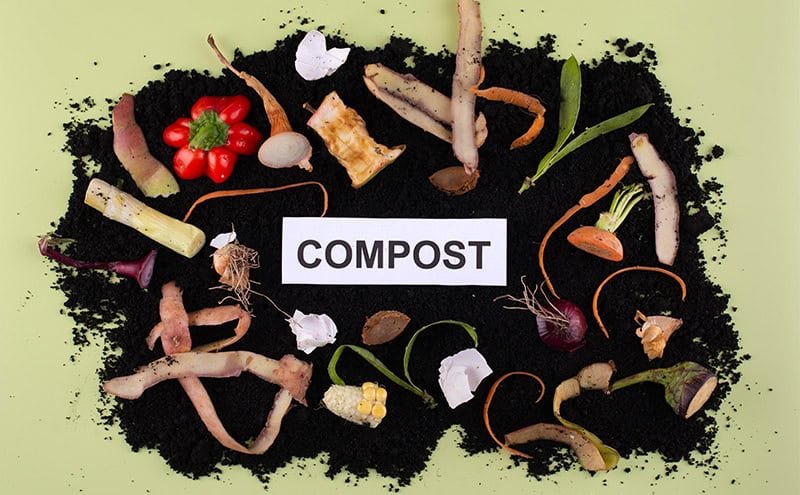
This tutorial will show you how to make compost at home. You’ll learn about the materials you need and how to balance them. We’ll cover the science behind composting and solve common problems.
No matter your space, there’s a composting method for you. We’ll discuss traditional heaps, vermicomposting, bokashi, and electric composters. By the end, you’ll know how to make your own “black gold” and enjoy composting’s benefits.
Key Takeaways
- Composting at home reduces waste and improves soil quality
- A balanced mix of carbon-rich and nitrogen-rich materials is essential
- Maintain proper moisture levels and aerate your compost regularly
- Various composting methods suit different living situations
- Finished compost is a valuable resource for your garden
- If you’re struggling to start your garden and grow your own vegetables and flowers, this bag of composted cow manure has your back
- Made of composted cow manure: organic and has nutrients that are gradually released, ensuring it doesn’t burn tender roots
Introduction to Composting
Composting turns organic waste into nutrient-rich soil naturally. By composting at home, you can help your garden thrive and lessen your environmental impact. You can choose from traditional or alternative composting methods, making the process rewarding and green.
A well-managed compost pile can finish in just three months. Success comes from knowing the composting process and following best practices. Aim for a pile size of 3 to 5 cubic feet for the right mix of materials and oxygen.
For those with less space, a closed tumbler can help with composting. It’s great for city living. Turning your compost every three to four weeks speeds up the process, giving you finished compost for your garden.
Temperature is key for a healthy compost pile. It should hit at least 140 degrees Fahrenheit for three days before turning. This high heat kills pathogens and weed seeds, making the compost safe and full of nutrients.
“Composting is a simple yet powerful way to transform waste into a valuable resource for your garden. By understanding the science behind the process and following best practices, anyone can create high-quality compost at home.”
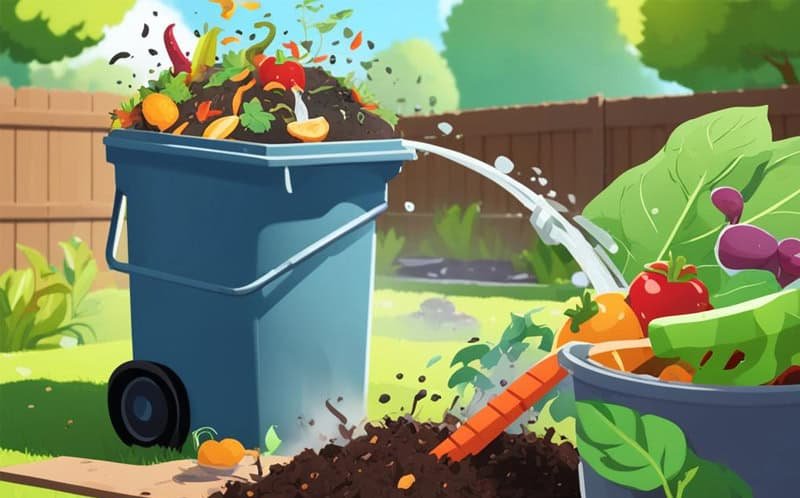
Problems like bad smells can happen if your compost lacks oxygen, has too much moisture, or has an unbalanced mix of materials. Keep an eye on your compost and adjust as needed to avoid these issues.
| Composting Statistic | Value |
|---|---|
| Total municipal waste generated in the U.S. (2017) | 267 million tons |
| Municipal waste sent to landfills and incinerators in the U.S. | Two-thirds |
| Average cost to landfill municipal solid waste in the U.S. (2019) | $55 per ton |
| Percentage of food scraps and garden waste in total waste thrown away | Over 28% |
| Waste diverted from landfills by San Francisco through composting | 50% |
Composting does more than help your garden. It reduces greenhouse gas emissions by keeping organic waste out of landfills. In the U.S., landfills are a big source of methane emissions. Composting is a green way to tackle this issue. San Francisco, for example, cuts down waste in landfills by 50% and reduces carbon emissions by over 90,000 metric tons a year.
Starting to compost at home is good for your garden and the planet. It makes nutrient-rich soil and supports a sustainable lifestyle. By composting, you’re helping to reduce waste and create a healthier environment.
Benefits of Composting for Your Garden and the Environment
Composting is a simple way to make nutrient-rich soil for your garden. It also helps protect the environment. By using food scraps and yard waste, you can improve soil, cut down on landfill waste, and reduce greenhouse gases.

Improving Soil Quality
Adding compost to your soil makes it better for plants to grow. It helps soil hold water and gives plants the nutrients they need. This “black gold” lets you grow a healthy garden without synthetic fertilizers.
Using compost often makes your garden more sustainable and eco-friendly.
Reducing Landfill Waste
Choosing a compost bin for your waste cuts down on landfill trash. A lot of food is wasted, and most of it ends up in landfills. In the U.S., food waste was the second-biggest type of trash in 2018.
By composting, you turn waste into nutrient-rich soil for your garden. This helps reduce waste and supports a healthier planet.
| Statistic | Value |
|---|---|
| Percentage of food wasted globally | 30% |
| Trash generated in the U.S. in 2018 | 300 million tons |
| Organic waste each American could compost annually | 1,200 pounds |
Lowering Greenhouse Gas Emissions
Composting cuts down on waste and fights climate change by reducing greenhouse gases. Organic waste in landfills breaks down and makes methane, a strong greenhouse gas. Composting stops this by making carbon dioxide, which is less harmful.
San Francisco diverts 80% of waste from landfills annually through its composting program, reducing the equivalent of 90,000 metric tons of carbon dioxide emissions per year.
More cities are starting composting programs, and people are composting at home. This helps reduce greenhouse gases. By making compost tea and using your compost, you can help make the world more sustainable.
The Science Behind Composting
Composting is a cool process that uses tiny organisms to turn organic waste into nutrient-rich soil. These tiny creatures, like bacteria and fungi, work together to make your compost materials into a soil booster. This process is key for a healthy garden.

There are two main types of tiny organisms in composting: mesophilic and thermophilic. Mesophilic ones work best in temperatures between 68 to 113 degrees Fahrenheit. They start breaking down the waste. When the compost gets hot, thermophilic ones take over, speeding up the process.
For these tiny helpers to work well, you need the right mix of carbon and nitrogen in your compost. Aim for a mix of 25:1 to 30:1 carbon to nitrogen. Use “brown” materials like dried leaves and “green” materials like fresh grass clippings and food waste to get this balance.
| Composting Factor | Ideal Range |
|---|---|
| Carbon-to-Nitrogen Ratio | 25:1 to 30:1 |
| Moisture Content | 40% to 60% |
| Oxygen Levels | At least 5% |
Keeping the right moisture in your compost is key. Aim for 40% to 60% moisture. Too dry slows things down, and too wet can cause bad smells.
Oxygen levels of at least 5% are required for aerobes, the most efficient composting microorganisms.
Turning your compost often helps keep oxygen in. This stops it from getting too dense and keeps the good microbes happy.
As the tiny organisms work, they release important nutrients like nitrogen, phosphorus, and potassium. These are great for plants. When you add the finished compost to your soil, plants can use these nutrients.
By knowing how composting works and giving the right conditions for microbes, you can turn waste into a garden booster. This helps your garden and is good for the planet.
Essential Materials for Composting
To make a healthy compost pile, you need a mix of materials that feed the microbes. This mix includes carbon-rich “brown” materials, nitrogen-rich “green” materials, water, and oxygen. These elements work together to keep your compost pile in top shape.

Carbon-Rich “Brown” Materials
“Browns” are materials high in carbon that give energy to microbes. They keep your compost pile structured and prevent it from getting too wet or dense. Here are some common brown materials you can use:
- Dry leaves
- Straw and hay
- Sawdust and wood chips
- Shredded paper (uncoated)
- Cardboard
- Pine needles

Nitrogen-Rich “Green” Materials
“Greens” are materials high in nitrogen that help microbes grow and reproduce. They speed up composting and make your compost pile hotter. Here are some green materials you should add:
- Grass clippings (untreated)
- Fruit and vegetable scraps
- Coffee grounds and tea leaves
- Manure (cow, horse, poultry, sheep, rabbit)
- Fresh hay
- Seaweed
According to the United States EPA, yard trimmings and food residuals together make up 20-30 percent of U.S. municipal solid waste.
Water and Oxygen
Your compost pile also needs the right amount of water and oxygen. Microbes need a moist environment to work well. Keep your compost as damp as a wrung-out sponge, adding water as needed.
Oxygen is key for composting, supporting aerobic microbial activity. Turn your compost pile with a fork or tumbler weekly to get enough oxygen. This also helps with moisture, prevents compaction, and speeds up decomposition.
| Material | Carbon to Nitrogen Ratio |
|---|---|
| Dry leaves | 60:1 |
| Straw | 75:1 |
| Sawdust | 325:1 |
| Grass clippings | 17:1 |
| Vegetable scraps | 25:1 |
| Coffee grounds | 20:1 |
With the right mix of brown and green materials, along with moisture and oxygen, you can make a great compost pile. Aim for a mix of about 3 parts brown to 1 part green by volume. This balance is key for a healthy compost pile that makes nutrient-rich humus for your garden.
Choosing the Right Composting Method
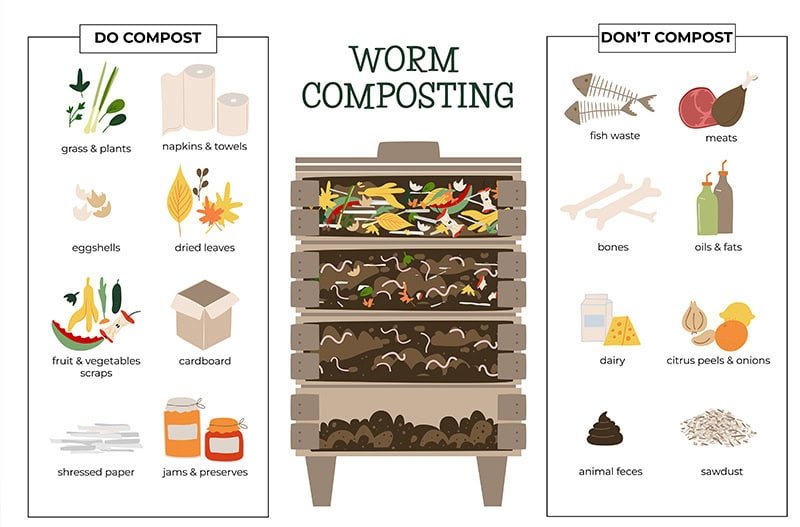
There are many composting methods to pick from, each with its own pros and cons. The best method for you depends on your space, time, and the garden waste you have. Here are some popular options:
- Cool or Passive Composting: This method is easy to maintain but takes time. It uses microbes that work best in temperatures between 40°F and 110°F. This process can take up to a year to finish.
- Hot or Active Composting: For quick composting, hot composting is best. Fill a bin or pile with ingredients all at once. It needs more work but can finish in weeks.
- Sheet Composting: This method is great for making new garden beds. Layer your compost materials on the ground in late summer. By spring, you’ll have rich soil for planting.
- Trench Composting: Perfect for small gardens. Dig a trench, fill it with compost materials, and cover with soil. As it breaks down, it enriches the soil and helps plants grow.
Regardless of the method you pick, remember a few things. Mix “brown” and “green” materials for balance. Keep your compost moist but not wet, as too much water slows it down. And turn it regularly to add oxygen and speed up the process.
The beauty of composting is its flexibility. Whether you have a big backyard or a small balcony, there’s a method for you.
By picking the right method and following best practices, you can turn garden waste into rich compost. This not only reduces your environmental impact but also gives you a valuable resource for your garden. It will benefit your plants for years.
How to Compost: Step-by-Step Guide
Are you ready to start composting at home? This guide will show you how to make your own compost. It’s great for your garden. You can compost in a bin or a pile, just make sure you get the basics right.
Setting Up Your Compost Bin or Pile
Start by picking a spot in your backyard that gets lots of sunlight. If you’re using a compost pile, clear a spot for it. This method is free but not the best at breaking down materials.
Or, go for a compost bin, which is the top choice. These bins work better because they keep moisture and heat in. Pick a bin that fits your food waste and put it in the sun to help it break down faster.
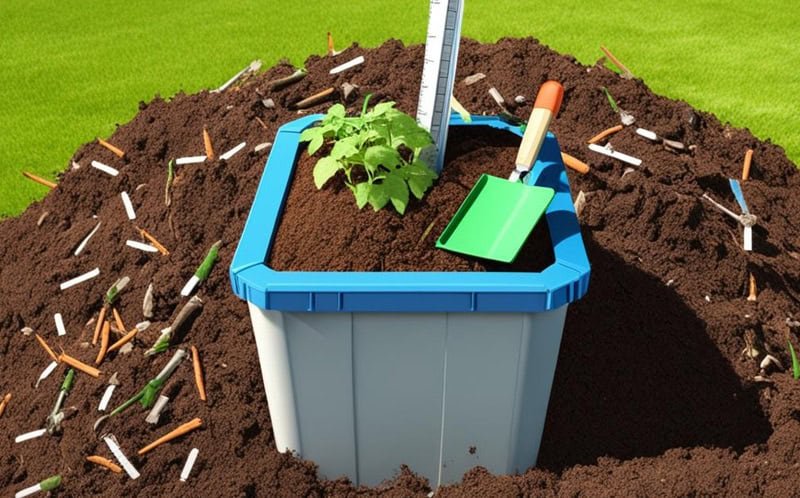
Layering Your Compost Materials
Begin with a layer of brown stuff like twigs and mulch at the bottom for drainage. Then, add some green stuff, followed by more brown. Aim for a mix of one green to three browns. If it’s too wet or smells bad, add more brown. If it’s too dry, add green stuff and water it.
The ideal mix is 4:1 browns to greens. For perfect compost, the carbon to nitrogen ratio should be 25 to 30 parts carbon to 1 part nitrogen.
Maintaining Proper Moisture Levels
Keep your compost damp, like a wet sponge. It should be 40-60% moist for best results. But don’t overwater, as that can kill the good stuff and cause rot. Aim for moist but not soaked.
Turning and Aerating Your Compost
Turn your compost pile once a week to add oxygen and speed up the process. Mix everything well to help it break down faster. Composting needs the right mix of temperature, air, moisture, and carbon to nitrogen.
Turning your compost pile every two weeks helps it decompose quicker. By following these steps and keeping up with your compost, you’ll have nutrient-rich compost for your garden in a few months.
Troubleshooting Common Composting Issues
Even the most experienced composters face problems sometimes. Here are some common composting issues and how to fix them:
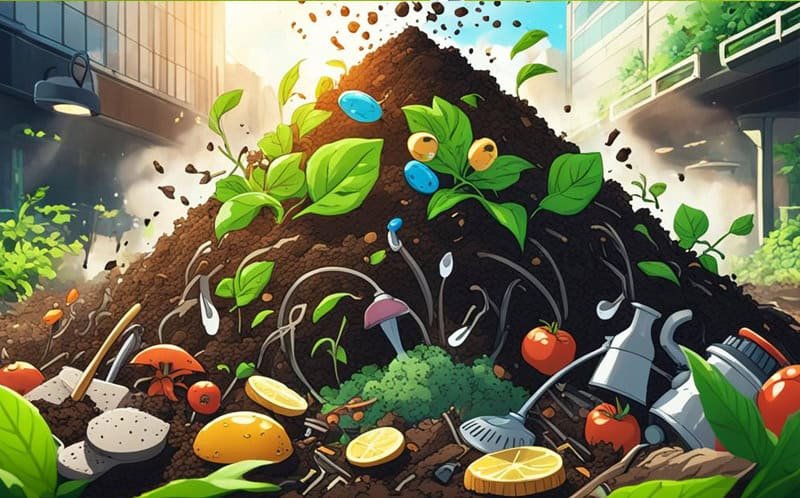
If your compost pile feels cool when you stick your hand in, it needs a turn. Turning it every few weeks helps aerate it and speeds up decomposition. Aim for a pile that’s as hot as the hot water from your faucet to know it’s doing well.
Ammonia smell and extreme heat in your compost pile mean it has too much nitrogen. Add more carbon-rich stuff like straw, dry leaves, or peat moss to balance it out. This helps your compost break down right and keeps bad smells away.
Not checking on your compost pile can slow it down. If it’s been a month since you last looked at it, give it a stir. Add water if it’s dry, and check the temperature. If it’s not getting hot enough, add more nitrogen-rich stuff to help it.
Composting tip: Keep a stash of high-carbon materials like straw, kitty litter, dry leaves, or peat moss near your compost pile to maintain balance in the C/N ratio.
Other common composting problems include:
- Pest infestations: To keep pests like fruit flies, skunks, and rodents away, use a tight lid on indoor bins and skip meat or fatty foods in outdoor piles.
- Slow decomposition of certain materials: Items like eggshells and corncobs take a while to break down. Chop or shred them first to speed up the process.
- Excessive moisture: Too much rain can make your compost too wet and smelly. Use a container without a base for better drainage. A drier pile breaks down faster and stops nutrient loss.
| Issue | Solution |
|---|---|
| Cool compost pile | Turn compost regularly to aerate and promote decomposition |
| Ammonia smell and high heat | Add carbon-rich materials to balance C/N ratio |
| Neglected compost pile | Turn, add water if needed, and re-charge with nitrogen-rich materials |
| Pest infestations | Use tight-fitting lids and avoid adding meat or fatty foods |
| Slow decomposition of tough materials | Shred or chop items before adding to compost |
| Excessive moisture | Use a container without a base for better drainage |
By fixing these common issues, your compost pile will work better and give you great garden soil. Remember, the right mix of materials, moisture, and air is key to good composting.
Accelerating the Composting Process
If you want to turn kitchen and yard waste into compost fast, there are ways to speed it up. By making your compost pile the right way, you can get nutrient-rich compost in weeks, not months.
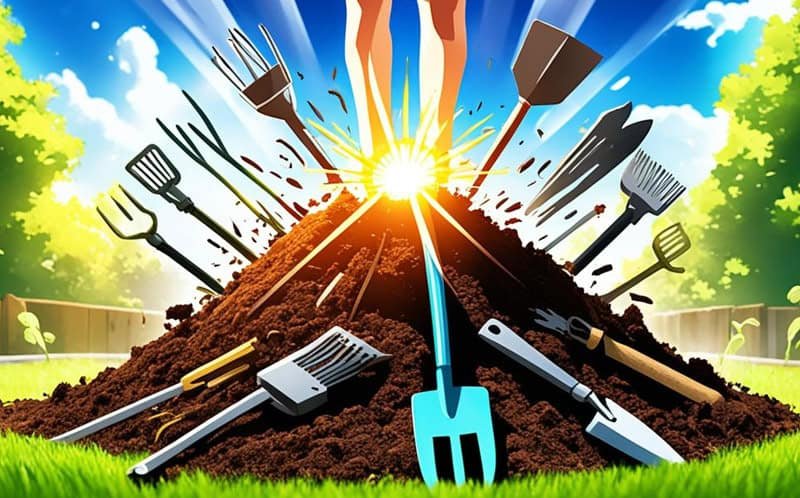
Using Compost Activators
Using compost activators is a great way to kickstart composting. These can be things like finished compost or special starters. They add good microorganisms that help break down waste faster. Just add a layer of finished compost on top of your brown materials to boost the process.
Optimizing Compost Pile Size
The size of your compost pile is key for quick breakdown. Aim for a pile that’s at least 3’x3’x3′ (27 cubic feet) big. This size supports many microorganisms and gets hot, which helps compost fast.
With the right mix of brown and green materials, water, and air, the heat-loving bacteria will do their job. They create temperatures between 130-170°F (54-77°C). With good care, you can have compost ready in six to eight weeks.
| Material Type | Ideal Ratio | Effect on Composting Speed |
|---|---|---|
| Brown (Carbon-rich) Materials | 20 parts | Provides energy for microorganisms, helps maintain pile structure |
| Green (Nitrogen-rich) Materials | 1 part | Supplies nutrients for microbial growth, accelerates decomposition |
Monitoring Temperature
Checking your compost pile’s temperature is key for fast breakdown. You can feel the temperature by sticking your hand in the pile. Aim for temperatures between 130-150°F (54-66°C).
If it’s too cool, try moving it to a sunnier spot or add more brown materials. But don’t let it get over 160°F (71°C), as this can harm the good microorganisms.
Composting is a blend of art and science. By understanding the key factors that influence the process, such as material ratios, pile size, and temperature, you can fine-tune your composting technique to achieve faster, more efficient results.
The speed of turning waste into compost depends on how much time and effort you put into it. By using these tips and keeping an eye on your compost, you’ll soon have rich, homemade soil amendment.
Harvesting and Using Your Finished Compost
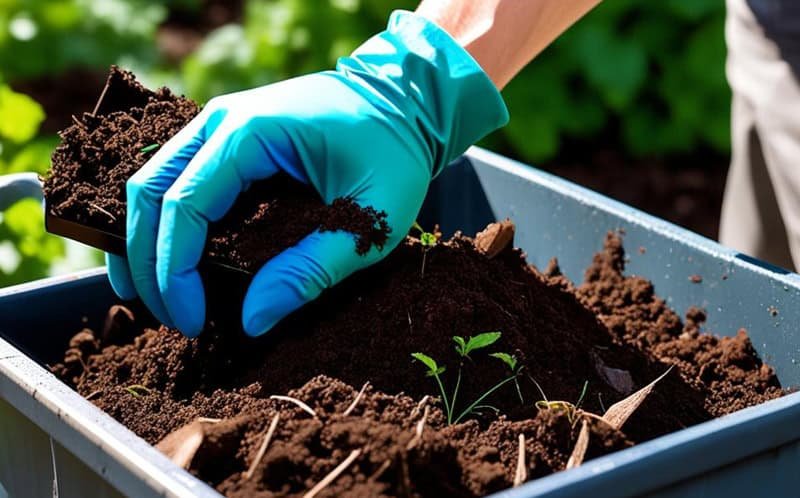
After making compost at home, the moment to harvest and use it comes. This process can take from a few months to a year. It depends on the composting method and how well you manage it.
When your compost looks dark, crumbly, and smells earthy, it’s ready. It should be smooth and not have any food scraps or plant pieces. If you find twigs or hard bits, screen the compost before using it.
Here are some tips to get the most from your compost:
- Harvest compost in the fall for best results and to prevent losing nitrogen in spring.
- Add one to three inches of compost to your garden, mixing it into the top 4 to 8 inches of soil.
- Use up to 25% compost in potting mixes for indoor plants or spread it thick on existing plants.
- Make compost tea by steeping finished compost in water. It acts as a liquid fertilizer and fights leaf diseases when sprayed on plants.
If you’ve been vermicomposting with Red Wigglers or European Night Crawlers, your worm compost is ready in two to three months. To get the compost, sort through the bin and take out any worms or cocoons. This keeps the worms healthy for more composting.
A compost with green waste, food scraps, and carbon-rich materials gives plants the nutrients they need to grow well.
| Composting Method | Time to Harvest | Key Characteristics of Finished Compost |
|---|---|---|
| Traditional Composting | 6 months to 1 year | Dark, crumbly, earthy smell, reduced in size by half |
| Vermicomposting | 2 to 3 months | Rich, dark, and finely textured material |
| Tumbler Composting | 1 to 2 months | Consistent texture, no recognizable food scraps |
By working hard to make compost at home, you get a great soil booster for your garden. This effort pays off as your plants grow strong in the rich soil your compost provides.
Advanced Composting Techniques
For those looking to improve their composting, advanced methods like hot composting, vermicomposting, and bokashi fermentation are great. These are favorites among permaculture fans who want to make systems that don’t need outside help.
Hot composting heats up to 130°F to 160°F to help microbes that love heat break down materials fast. This method can make compost ready for your garden in just three to six weeks. It also kills off harmful germs and weed seeds. To get the best results, keep the right amount of oxygen, moisture, and the right mix of carbon and nitrogen for the microbes.
Vermicomposting uses worms to turn organic stuff into nutrient-rich compost. This takes three to six months and gives you compost that’s great for your garden. Worm castings are packed with nutrients but have less nitrogen than other composts, making them a top choice for gardeners.
Bokashi fermentation starts the composting process by breaking down organic stuff into a form plants can use. It’s great for permaculture because it lets you compost kitchen waste like meat and dairy, which you can’t usually compost.
| Composting Method | Time to Finished Compost | Key Features |
|---|---|---|
| Hot Composting | 3-6 weeks | High temperatures, faster decomposition, eliminates pathogens and weed seeds |
| Vermicomposting | 3-6 months | Uses worms, produces nutrient-rich vermicompost, lower nitrogen content |
| Bokashi Fermentation | 2-4 weeks (fermentation) + 2-4 weeks (composting) | Ferments organic matter, allows composting of meat and dairy, bioavailable nutrients |
| Cold Composting | 6-12 months or longer | Slow decomposition, minimal maintenance, suitable for yard waste |
Using these advanced composting methods, you can make top-notch, organic compost for your garden. Whether you choose hot composting for speed, vermicomposting for nutrients, or bokashi fermentation for its versatility, you’ll be making great compost at home.
Composting in Small Spaces: Urban and Apartment Solutions
Living in an apartment or urban area doesn’t stop you from composting. The average US household throws away 650 lbs of organic waste each year. This waste often ends up in landfills. By composting in small spaces, you can help reduce waste and cut down on greenhouse gases. There are many ways to compost in apartments and cities.
Vermicomposting (Worm Composting)
Vermicomposting, or worm composting, is great for small spaces. It uses special worms to turn organic matter into nutrient-rich compost. You can set up a worm bin in a small corner of your apartment. This method is odorless when done right and needs oxygen to work.
Bokashi Composting
Bokashi composting is another great option for small spaces. It uses microorganisms to ferment waste in a special bin. This method is fast, doesn’t smell much, and takes a variety of food scraps. You layer food waste with a special bran mix in the bin. After a few weeks, bury it in soil or add it to a bigger compost pile to finish.
Countertop Electric Composters
For an easy composting option, try countertop electric composters. These small devices quickly break down food waste into compost. They’re odorless and can go in your kitchen or utility room. They’re perfect for apartment dwellers who want to reduce waste without dealing with smelly compost or pests.
| Composting Method | Space Required | Time to Compost | Suitable Materials |
|---|---|---|---|
| Vermicomposting | Small corner or closet | 2-3 months | Fruit and vegetable scraps, coffee grounds, tea bags, eggshells |
| Bokashi Composting | Countertop or under sink | 2-4 weeks | All food scraps, including meat and dairy |
| Electric Composters | Countertop | 24-48 hours | Fruit and vegetable scraps, coffee grounds, tea bags, eggshells |
Choosing the right composting method for your space helps reduce waste and makes valuable compost for plants or gardens. Every effort to live sustainably makes a difference for our planet.
Seasonal Composting Tips
Composting is something you can do all year, but it changes with the seasons. Knowing how to adjust your composting can keep your pile healthy and full of nutrients. Here are some tips for composting in each season:
In spring, you’ll find lots of “brown” materials like dried leaves and twigs from yard clean-up. This is a great time to add “green” materials like grass clippings and kitchen scraps. This mix helps get the compost pile just right for breaking down fast.
Summer makes composting work faster because it’s warmer. Make sure your compost stays damp but not too wet. This stops bad smells and helps it break down. If you started composting in fall or winter, you might have compost ready for your garden by summer.
Compost tumblers are great in summer. They make turning and aerating your compost easy, which helps it break down quicker.
Fall is perfect for collecting “brown” materials like leaves. Chop them up before adding them to your pile to help them break down faster. Keep adding kitchen scraps and other “green” stuff to keep the mix balanced.
Winter composting might seem tough, but it’s doable. It just takes longer because the microbes work slower in the cold. Here’s how to help things along:
- Insulate your compost bin with a tarp or move it to a sunnier spot.
- Chop your compost materials into smaller pieces to help them break down faster.
- Turn the pile when it’s warm to keep air moving through it.
- Keep adding kitchen scraps and other “green” stuff all winter.
| Season | Composting Tips |
|---|---|
| Spring | Abundance of “brown” materials; balance with “green” materials for ideal C:N ratio |
| Summer | Higher temperatures accelerate decomposition; keep compost moist but not soggy |
| Fall | Collect and chop fallen leaves; continue adding kitchen scraps and “green” materials |
| Winter | Slower decomposition; insulate bin, finely chop materials, maintain aeration, and continue adding “green” materials |
Always check your compost pile’s temperature, moisture, and smell throughout the year. Adjust your composting as needed. By following these tips and understanding composting basics, you can make nutrient-rich compost for your garden all year.
Frequently Asked Questions (FAQs)
Q: What is the best way to make compost at home?
A: To make compost at home, start by choosing a compost bin or creating an open compost heap in your yard. Add a balanced mix of organic material such as kitchen scraps, yard waste, and paper products. Ensure you turn the compost regularly to aerate it and speed up the composting process.
Q: What type of organic material can be added to the compost heap?
A: Organic material that can be added to the compost heap includes fruit and vegetable scraps, coffee grounds, eggshells, yard waste like grass clippings and leaves, and shredded paper. Avoid adding meat, dairy, and fats as they can attract pests.
Q: How often should I turn the compost?
A: You should turn the compost every 1-2 weeks to aerate it, which helps speed up the composting process and prevents any unpleasant odors. Turning the compost ensures that all the materials break down evenly.
Q: What information do I need to know about composting at home?
A: When composting at home, it’s important to balance green and brown materials, keep the compost heap moist but not waterlogged, and turn the compost regularly. Additionally, make sure to get a bin or space that allows for good airflow.
Q: How do I choose a compost bin?
A: When choosing a compost bin, consider the amount of organic material you typically generate, the space available in your yard, and whether you prefer an enclosed compost bin or an open compost pile. Enclosed bins are great for containing compost and reducing odor.
Q: How long does it take to make compost?
A: Compost can take anywhere from 3 months to 2 years to fully decompose, depending on factors like the type of organic material added, how often you turn the compost, and the conditions of your compost heap or bin.
Q: What does finished compost look like?
A: Finished compost should be dark, crumbly, and smell earthy. There should be no recognizable pieces of the original organic material. This home-made compost can be used to enrich garden soil.
Q: How do I use the compost in my garden?
A: Use the compost by mixing it into garden soil to improve fertility, as a top layer of compost for plants, or to make compost tea for watering plants. Compost will help retain moisture in the soil and provide essential nutrients for plant growth.
Q: Can I make compost tea from my compost?
A: Yes, you can make compost tea by steeping finished compost in water for a few days. This nutrient-rich liquid can be used to water plants and boost their growth. Make sure to get a fine mesh bag to contain your compost while brewing.
Q: What should I do if my compost pile smells bad?
A: If your compost pile smells bad, it may be too wet or lack sufficient air. Turn the compost to aerate it and add dry brown materials like leaves or shredded paper to absorb excess moisture. Properly balanced and aerated compost should not produce unpleasant odors.
Conclusion
Composting is great for your garden and helps our planet too. It turns waste into nutrient-rich soil that feeds your plants. This means you don’t need harmful chemical fertilizers that can harm our water.
There are two main ways to compost: the “hot pile” method, which takes a few months, and the “cold pile” method, which takes longer. Both methods help reduce waste and are good for the planet. To make composting work well, mix “brown” and “green” materials in the right ratio and keep the pile hot to kill bad stuff.
Adding bokashi tea to your compost also helps by bringing in good bacteria. This makes composting faster and more effective.
Composting is for everyone, no matter where you live. You can compost in a big backyard or even in a small apartment. There are many ways to compost, like vermicomposting, bokashi, or using electric composters on your counter.
By composting, you can help reduce the waste that ends up in landfills. In the U.S., about 30% of what we throw away can be composted. Composting helps us use less waste and makes our gardens healthier. Start composting today and make a difference for the planet.
Video Tutorial On How To Make Compost At Home
Please watch my complete A to Z guide on compost making at home below:
Last update on 2025-07-11 / Affiliate links / Images from Amazon Product Advertising API

